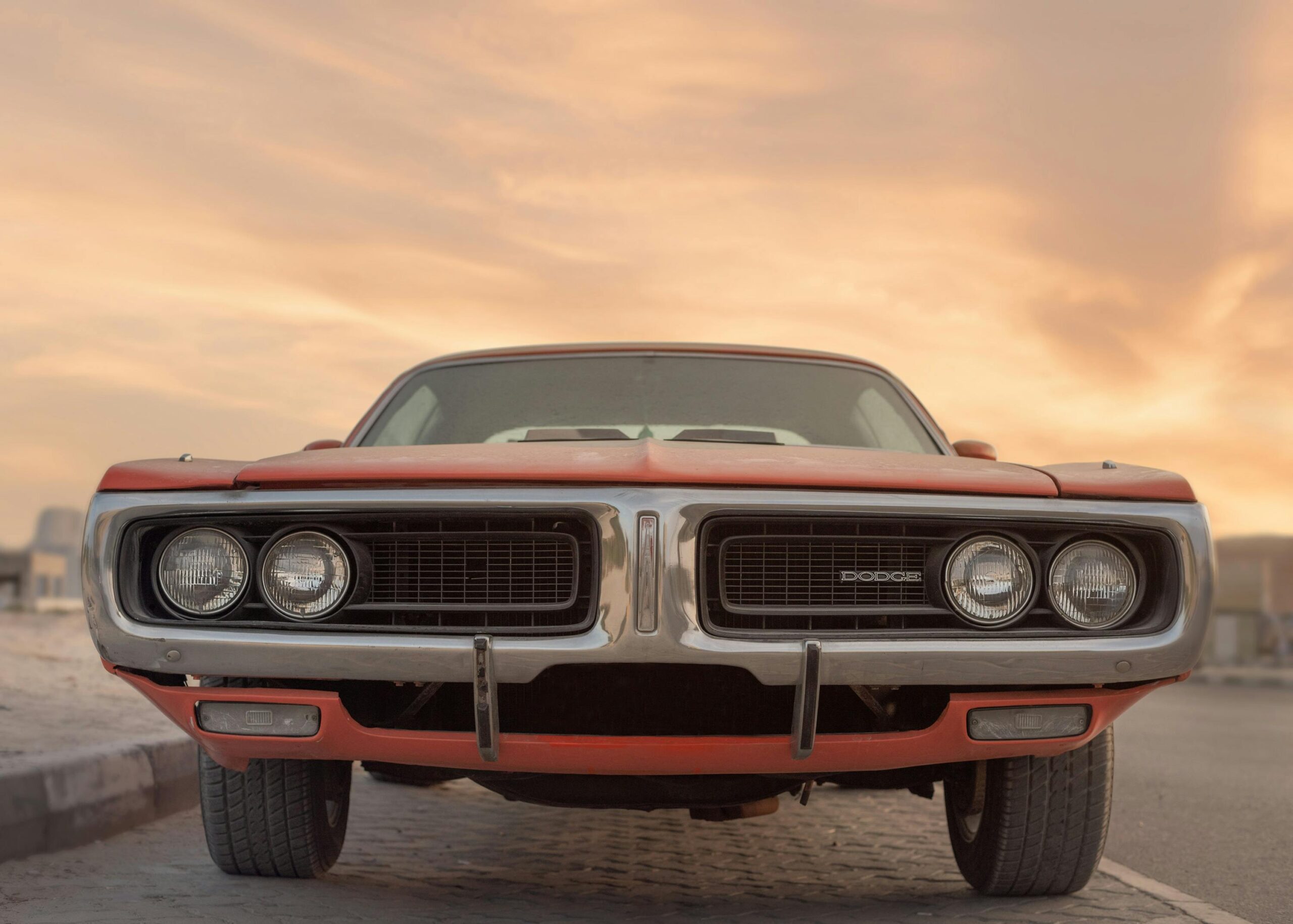The 1972 Dodge Challenger represents a transitional moment in the history of American muscle cars. As the automotive industry faced increasing regulatory pressures and shifting consumer preferences in the early 1970s, the 1972 Challenger marked a departure from the high-octane performance models of the late 1960s and early 1970s. Despite these changes, the 1972 Challenger remains a fascinating example of Dodge’s attempt to balance its muscle car heritage with the demands of a new era.
Design and Styling
The 1972 Dodge Challenger continued the classic muscle car aesthetic with its bold and aggressive design, albeit with some notable adjustments. The exterior retained the iconic long hood and short deck design, giving it a recognizable and enduring presence. However, the 1972 model featured a more subdued front grille compared to its predecessors, reflecting the broader industry trend towards less ostentatious styling. The federally mandated 5-mph bumpers also altered the car’s appearance, adding larger, bulkier bumpers that somewhat detracted from the sleek lines of the earlier models.
Performance and Engine Options
Under the hood, the 1972 Challenger was a product of its time, with performance options significantly toned down from the heyday of the muscle car era. The most notable engine option was the 318 cubic inch (5.2-liter) V8, which produced 150 horsepower. This was a significant drop from the more powerful engines of previous years, reflecting the tightening emissions regulations and fuel economy standards. For enthusiasts seeking more power, the 340 cubic inch (5.6-liter) V8 was available, but even this engine was detuned from its earlier glory. The reduction in performance was a disappointment to those who cherished the raw power of the earlier Challengers, but it was consistent with the industry’s shift towards more efficient and environmentally conscious engineering.
Interior and Features
Inside, the 1972 Challenger offered a comfortable and functional cabin that prioritized practicality over performance-oriented features. The interior was well-appointed for its time, with options such as bucket seats, a center console, and an AM/FM radio. While not as sporty as some earlier models, the interior provided a solid and comfortable driving experience, reflecting Dodge’s effort to cater to a broader market beyond just performance enthusiasts.
Legacy and Market Impact
The 1972 Dodge Challenger stands as a symbol of the shifting tides in the American automotive landscape during the early 1970s. While it may not match the performance benchmarks set by its predecessors, the 1972 model is valued for its historical significance and as a bridge between the high-performance muscle cars of the 1960s and the more practical vehicles of the 1970s. For collectors and enthusiasts, the 1972 Challenger offers a glimpse into an era of transition, showcasing Dodge’s efforts to adapt its legendary muscle car to a changing world.
In summary, the 1972 Dodge Challenger represents a unique chapter in the muscle car’s storied history. Its blend of classic styling with new regulatory constraints captures a moment of change in the automotive industry. While it may not possess the raw power of earlier models, the 1972 Challenger remains an important and collectible part of Dodge’s legacy, cherished by enthusiasts for its place in automotive history.
